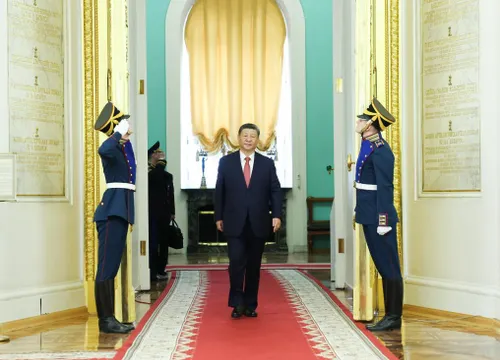Russia and China have solidified a major strategic partnership with the signing of a legally binding agreement to construct the long-delayed Power of Siberia 2 gas pipeline, a project poised to transform global natural gas flows and challenge Western energy influence. The agreement comes as Europe reduces reliance on Russian energy and the US maintains restrictions on Russian fossil fuel imports, marking a pivotal moment in global energy geopolitics.
Power of Siberia 2: Expanding the Energy Corridor
The Power of Siberia 2 pipeline is designed to transport up to 50 billion cubic metres of natural gas annually from Russia’s West Siberia to northern China via eastern Mongolia. Alongside the existing Power of Siberia pipeline, which supplies 38 billion cubic metres yearly, Russia will redirect over 100 billion cubic metres eastward—roughly equivalent to the volume originally intended for Europe through the abandoned Nord Stream 2 pipeline.
This deal reflects China’s strategic patience and Russia’s urgent pivot east following significant losses in European gas exports due to sanctions. Timothy Ash, associate fellow at Chatham House, noted that China had been “playing very hard” to finalise the agreement, highlighting Beijing’s steady strategic support for Moscow.
The pipeline will span approximately 2,600 kilometres, connecting gas fields in Russia’s Yamal Peninsula and Altai region to northern China. Supplies are contracted for 30 years, with full operation expected within 5–7 years, potentially by 2030. Construction challenges include diverse terrain, extreme Siberian weather, maintaining gas pressure over long distances, and coordinating regulatory approvals across three countries.
Strategic and Economic Implications
The Power of Siberia 2 agreement represents more than an energy transaction—it reshapes global geopolitics and energy markets. For Russia, the pipeline secures a long-term export market, mitigates Western sanctions, and strengthens economic and geopolitical alignment with China. For China, the deal diversifies energy supply, reduces dependence on maritime imports, supports the coal-to-gas transition, and enhances infrastructure connectivity under the Belt and Road Initiative.
Christopher Granville of TS Lombard emphasised that while the MOU is not yet a Final Investment Decision, it demonstrates China’s strategic backing for Russia amid ongoing tensions related to Ukraine and broader global energy politics.
The pipeline will have broad market effects. Europe faces higher LNG costs, potential supply vulnerabilities, and accelerated pressure to develop renewable energy. U.S. LNG producers may redirect volumes to Europe due to reduced Chinese demand, while China benefits from lower-cost Russian pipeline gas, giving it a competitive advantage over other industrial importers.
Challenges and Long-Term Considerations
Despite the agreement, key challenges remain. Financing and final pricing arrangements are not fully clarified, technical difficulties across Siberia and Mongolia could delay progress, and geopolitical tensions may impact implementation. Climate commitments in both countries add uncertainty: China’s 2060 carbon neutrality target and Russia’s need to diversify beyond fossil fuels could influence long-term gas demand and the project’s economic viability.
Power of Siberia 2 forms part of a larger package of 22 cooperation agreements between Russia and China, encompassing military collaboration, trade expansion, technological cooperation, and financial system development outside Western structures. This multifaceted alliance represents one of the most significant non-Western partnerships in the modern era, potentially counterbalancing U.S.-led international systems.
The pipeline is expected to drive regional realignments in energy flows, including expanded Central Asian gas exports, Middle Eastern exports oriented toward Asia, and alternative pipeline routes bypassing politically sensitive regions. It may also accelerate Europe’s renewable energy adoption due to higher fossil fuel costs, encouraging the emergence of regional energy blocs with distinct pricing mechanisms and regulatory frameworks.
The Power of Siberia 2 pipeline marks a decisive eastward shift in Russian energy exports, securing China as a key partner and challenging Western energy assumptions. As construction progresses over the next decade, the project is likely to reshape global gas markets, influence international relations, and drive strategic adjustments in energy policy worldwide, heralding a new multipolar energy order.
Written By:
*Cole Jackson
Lead Associate at BRICS+ Consulting Group
Chinese & South American Specialist
** MORE ARTICLES ON OUR WEBSITE https://bricscg.com/ (https://bricscg.com/)
** Follow https://x.com/brics_daily (https://x.com/brics_daily) on X/Twitter for daily BRICS+ updates

